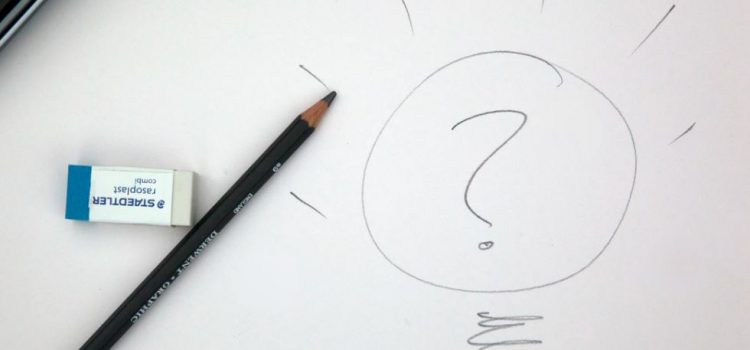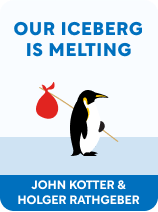

This article is an excerpt from the Shortform book guide to "Our Iceberg Is Melting" by John P. Kotter and Holger Rathgeber. Shortform has the world's best summaries and analyses of books you should be reading.
Like this article? Sign up for a free trial here .
Is your organization in dire need of a change but you don’t know where to start? How can looking to outside sources help expand your options?
In the fable Our Iceberg Is Melting, the penguins realize that their iceberg will not survive the winter but they can’t come up with solutions on how to fix it. Only when a seagull pays them a visit do they realize that their best course of action is to leave the iceberg altogether, something they never considered.
Here is why outside ideas are crucial when it comes to making big changes.
Develop a Vision
In the fable Our Iceberg Is Melting, a penguin named Fred noticed that the iceberg in which the colony lives was riddled with cracks. He first called together a meeting to initialize change, then another penguin named Louis worked to put together a team. This brings them to the third step in the change process: developing a vision.
Now that Louis has assembled the right penguins and turned them into a real team, they need to figure out what to do about the danger that the melting iceberg poses. In this part we’ll see how the team brainstorms solutions, and then comes up with short- and long-term plans.
(Shortform note: The Leadership Challenge combines this step and the next (Spread the Word) into a single principle: Be Inspirational. In other words, both your vision and the way you communicate it are part of inspiring your colleagues to make the change that your organization needs.)
The Visitor
The team of penguins started thinking about possible solutions to the expanding water inside the iceberg, and also asked other penguins in the colony for suggestions. However, none of the ideas they came up with were practical.
Eventually, a passing seagull landed on the iceberg, and Buddy and the Professor went to speak to it. They learned that the gull was a scout for a nomadic flock—the seagulls lived by constantly moving from one place to another, and this particular bird helped find places for the flock to go.
| The penguins’ traditional ways of thinking couldn’t adapt to this new situation, so none of them could come up with a solution to the iceberg melting. Like the penguins, it’s important to realize when old practices and thought patterns can’t handle a changing world. For example, marketing guru Seth Godin wrote Purple Cow because he believed that traditional marketing methods weren’t effective anymore. Godin goes on to say that, even though conventional mass-marketing is expensive and ineffective, countless companies rely on it to sell their products, because they’re stuck in traditional ways of thinking. Had the penguins remained stuck like those companies, they’d have stayed on the iceberg until it shattered, and the colony would have been wiped out. They needed outside ideas to inspire their plan for change. |
The Vision
The visiting seagull gave the penguins an idea for a simple, practical solution: They would leave the iceberg.
The Professor wondered why nobody had thought of that as soon as they realized that the iceberg was in danger. Louis responded that it wasn’t so surprising—they’d only ever known life on the iceberg, so leaving would be completely outside of their experience. They’d needed inspiration from an outside source in order to think of it.
| Seeking wisdom from unfamiliar sources, as the penguins did by befriending the seagull, does more than just give you new ideas—it boosts your ability to think creatively and improves your mood as well. In The Magic of Thinking Big, author and life strategist David J. Schwartz suggests finding friends and social groups with diverse backgrounds, religions, and political views. He describes such connections as “psychological sunshine”—both enlightening and enjoyable—and says that they’re part of building an ideal environment for yourself. |

———End of Preview———
Like what you just read? Read the rest of the world's best book summary and analysis of John P. Kotter and Holger Rathgeber's "Our Iceberg Is Melting" at Shortform .
Here's what you'll find in our full Our Iceberg Is Melting summary :
- A fable about the necessary steps in making major changes
- Dr. John Kotter’s eight-step process for change
- Why your job isn’t done just because you accomplished your goal






